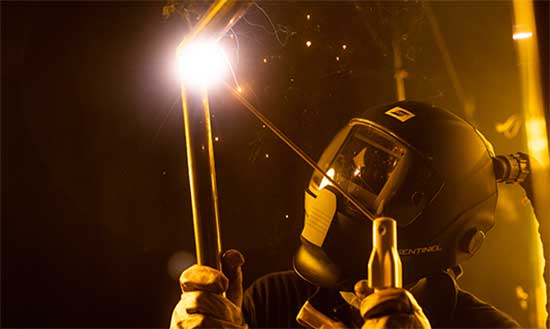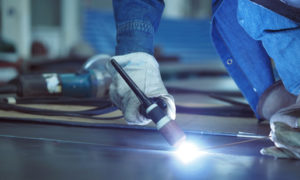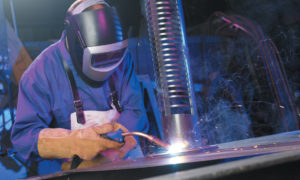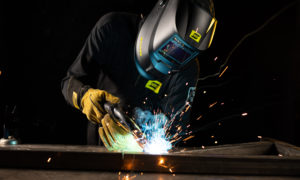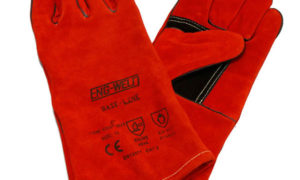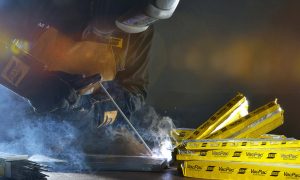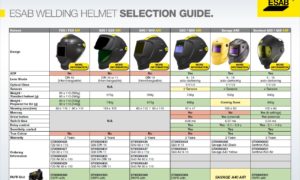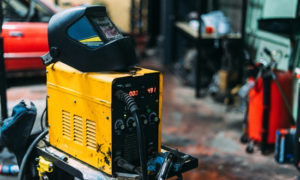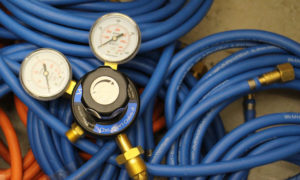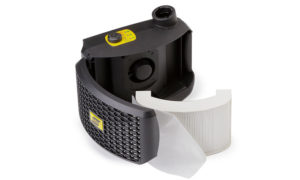Welding is the process with which two or more pieces of metal are joined together,
seamlessly using heat and pressure. When the heat is applied to the metals, they become
soft, which allows parts to join when adequate pressure is applied, and in some instances, a
molten filler metal is added.
The concept of welding has been around for centuries, in the middle ages blacksmiths would
heat metals to a very high temperature, before hammering them together, once cooled this
resulted in a strong, seamless join. Much more recently, electric and gas flames we utilised,
which proved much safer and quicker to work with, while it also meant that welding could be
done anywhere you can take your welding machine.
Today, welding has become highly specialised, with many types of welding used in various
applications across the globe. Three of the most common, and the most popular welding
methods are MIG welding, TIG welding, and MMA welding, with each being used extensively
for repair work in an array of industries.
MIG Welding (Metal Inert Gas Welding or GMAW)
MIG welding is a form of gas welding, during which an arc is formed between the terminal
wire of the anode and the workpiece itself, the arc then melts the two to create the weld pool.
The wire or anode acts as filler metal for the joint, being added to the weld pool and being
protected by the shielding gas.
The shielding gas is critical, as this protects the weld pool from contaminants within the
atmosphere, such as water or oxygen, which can have detrimental effects on the weld. This
inert gas, typically Argon, is pumped down the welding gun and out of a nozzle at the end,
although the type of gas you use will depend on the metals you are working with.
The fact that MIG welding consumables are available at very competitive rates makes it a
great option for many, while its ability to work effectively on sheet metals make it a highly
popular choice in many repair and maintenance fields.
The only repair and maintenance work that MIG welding is not well suited to is that which
take place outdoors or in a draughty environment. This is because the shielding gas can be
blown away from the weld pool, and this lack of protection can compromise the integrity of
the weld.
MIG Welders Products – Engweld
TIG Welding (Tungsten Inert Gas Welding or GTAW)
During TIG welding, the electrode used is made from Tungsten, which is a non-consumable
electrode. Unlike MIG welding, the electrode does not melt and add to the weld pool, as
Tungsten has a melting point of 3,422 °C, way above the temperature reached during arc
welding, while it is also resistant to corrosion, oxidation and has electric conductivity
benefits. As you do not need to replace them, you need to maintain them, which means filing
your electrodes down to a fine point.
With TIG welding, you have the option to add a filler metal where required, and this,
combined with the ability to work with thin metals and small welds make it an excellent
method for more precise repair work. Additionally, the increased precision it offers gives you
more control, making the final weld much more aesthetically pleasing.
TIG Welders Products – Engweld
MMA Welding (Shielded Metal Arc Welding)
One of the most common, and indeed popular types of welding to be used across repair
work in various sectors is Shielded Metal Arc Welding (SMAW). This method uses self-
shielding electrodes, which cuts down on the amount of equipment needed in order to
complete your weld. Hoses, regulators, and gas cylinders are replaced by a single electrode,
which is also more advantageous when working outdoors, as unlike other methods, where
the wind can affect the gas shield, stick welding is relatively unaffected by strong winds.
In order to create a strong weld, when using MMA welding the welder must select a suitable
electrode, the composition of the coating has a great deal of influence on aspects such as
the stability of the arc, the depth of penetration and the material deposition rate. Here,
electrodes can be divided into 3 main groups.
Cellulosic – With coatings that contain a high proportion of cellulose, these electrodes are
typically characterised by their deep penetration and a rapid burn off, which allows for quick
welding speeds. However, the weld deposit may be course, and deslagging can be tricky
once you have completed the weld.
Rutile – With a high proportion of titanium oxide, rutile electrodes offer easy arc ignition, as
well as low spatter and smooth operation. The slag is easy to remove, and thanks to their
good all-round welding properties rutile electrodes are excellent general purpose welding
electrodes.
Basic – Basic electrodes are used for medium to heavy fabrication projects, where the high
proportion of calcium carbonate and calcium fluoride, otherwise known as limestone and
fluorspar, produce a higher weld quality, excellent cracking resistance as well as good
mechanical properties.
MMA & Arc Welders Products – Engweld
Here at Engweld, we are a key distributor of all leading brands of welding machines, and
stock an array of welding machines and tools, including MIG welding, TIG welding and MMA machines. Visit our website and take a look at our range of repair and maintenance
electrodes.
Repair & Maintenance Electrodes Products – Engweld
If you have any questions about anything you have read in this article, if you’re looking for
advice on which welding machine to purchase, or if you have any other questions, do not
hesitate to contact us.

